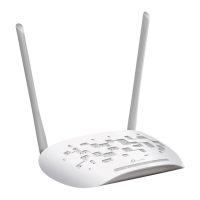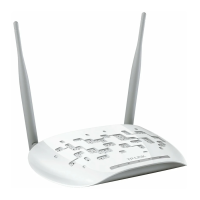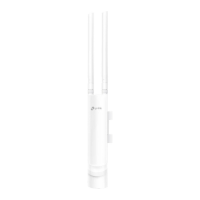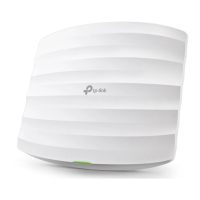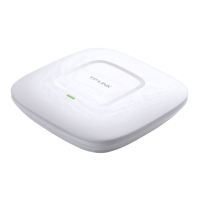101
Version Select the version of WPA-PSK.
WPA-PSK/WPA2-PSK: They’re two versions of WPA-PSK security
mode. WPA2-PSK is an update of WPA-PSK. Compared with WPA,
Theoretically, WPA2 is securer than WPA.
$XWR The device will automatically choose the version used by the root
AP.
:3$:3$ They’re two versions of WPA-PSK security mode normally
called WPA-PSK/WPA2-PSK. WPA2-PSK is an update of WPA-PSK.
Compared with WPA-PSK, theoretically, WPA2-PSK is securer than
WPA-PSK.
Encryption Select the Encryption type.
$XWR The default setting is Auto and the device will select TKIP or AES
automatically according to the wireless network of root AP.
7.,3 Temporal Key Integrity Protocol. TKIP is not supported in 802.11n
mode, 802.11ac mode or 802.11n/ac mixed mode. If TKIP is applied
in 802.11n, 802.11 ac or 802.11n/ac mixed mode, the device may not
be able to access the root wireless network. If TKIP is applied in 11b/
g/n mode (2.4GHz) or 11a/n mode(5GHz), the device may work at a low
transmission rate.
$(6 Advanced Encryption Standard. It is securer than TKIP.
PSK Password Specify the PSK password used in the connection with the clients.
Group Key
Update Period
Specify an update period of the encryption key. The update period
instructs how often the device should change the encryption key. 0
means that the encryption key does not change at anytime.
Click
Apply
, then click
Save
.
5.5 &RQILJXUH:LUHOHVV0$&)LOWHULQJ
Wireless MAC Filtering function uses MAC addresses to determine whether one host can
DFFHVVWKHZLUHOHVVQHWZRUNRUQRW7KHUHE\LWFDQHƬHFWLYHO\FRQWUROWKHXVHUDFFHVVLQWKH
wireless network. This function is available in all modes except the Client Mode.
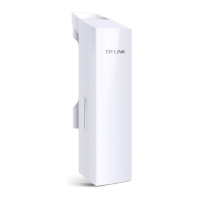
